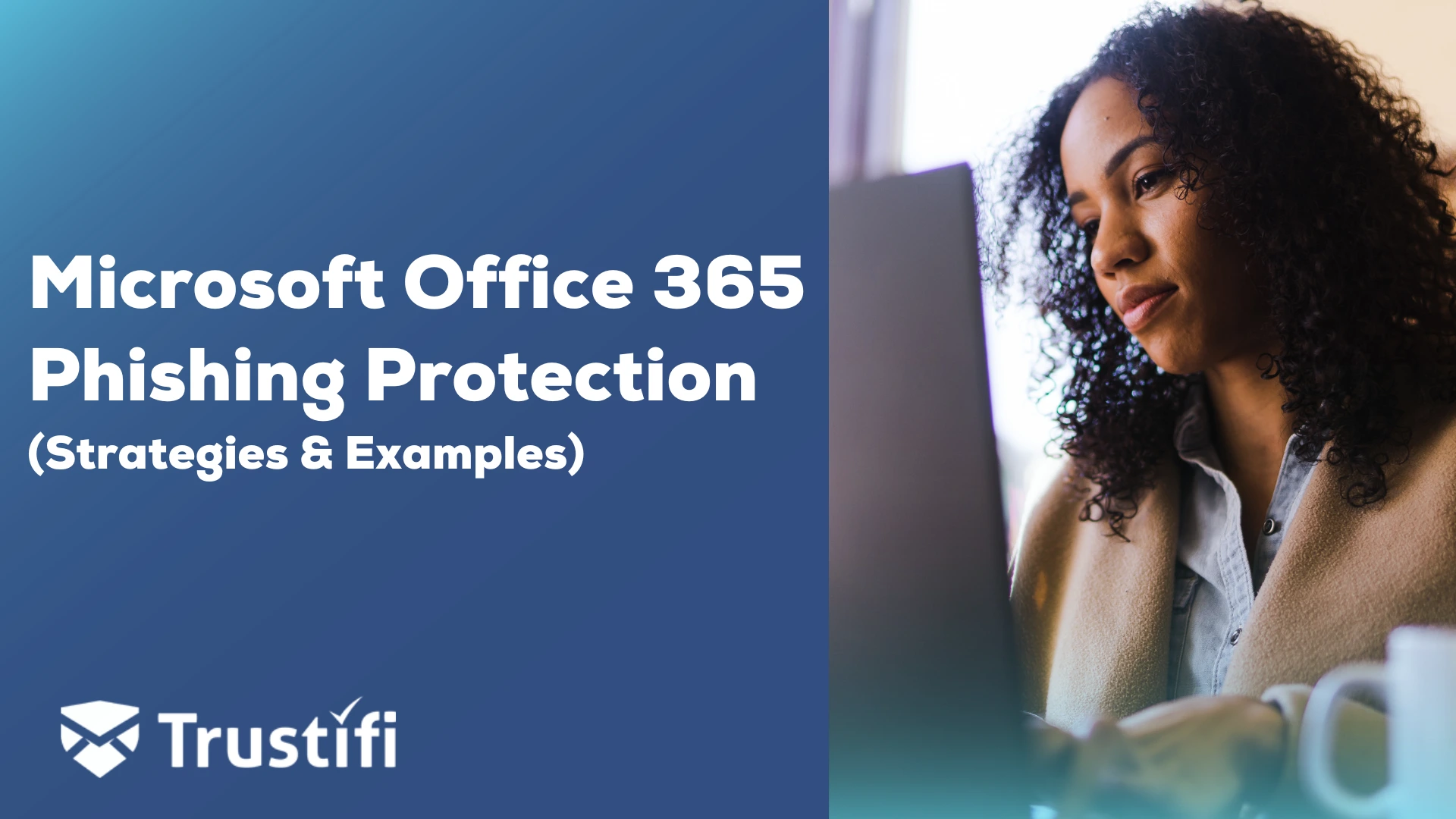Pharming cyber attacks originate as online fraud attacks that incorporate malicious code and redirection to fake websites. Cybercriminals attempt to install malware on their victims’ computers, activating it to redirect affected users to suspicious websites through DNS server poisoning, intending to get them to convey personal and financial information by stealing login credentials.
If you think you have found some pharming websites, you can contact your internet service provider (ISP). Ultimately, it is their job to detect and take down these malicious websites. However, with the ever-growing number of cybercriminals, there are bound to be some false websites that will sneak past them.
Sophisticated types of pharming attacks, including pharming malware sent through the email channel, could be prevented if the clients deploy an advanced email security platform like Trustifi.
Pharming vs. Phishing
You’ve probably heard the words phishing and farming many times before. But how does pharming work? And how is it different from phishing?
Pharming and phishing use deception emails, social engineering cyberattacks, and redirection to bogus websites to gain access to private data from unsuspecting users.
While phishing is an attempt to acquire sensitive details via a fake site or fake emails, pharming is redirecting users to a fake website, corrupting the DNS cache and the DNS server.
Some hackers will use phishing emails to send their malicious payloads to their victims, while some pharming scams do not leverage an email as the initial point of intrusion. Users could mistakenly download malware from malicious sites attackers can use to infect computers with viruses, malware, or other malicious software.
Many malware files go undetected by unsuspecting internet users, even with antivirus programs and pharming malware removal tools, until the threat actors activate them.
Both attack vectors can execute data theft and ransomware attacks against the user and financial institutions and companies, healthcare, and online retail sites storing their sensitive information, such as: credit card information, credentials, and home address.
Signs of a Pharming Attack
Malware creators deliver malicious applications through emails to specific targets to get financial gain when these malicious programs execute on user computers unknowingly.
Once the malware is running in the background, users should be extra vigilant for the following conditions:
- If your browser performs a redirect to another, verify the domain you have landed on is the legitimate website. Pay close attention. Sophisticated pharmers will try to convince users that they are on legitimate sites by using familiar logos and graphics on the fake sites, to make users feel safe and secure.
- Verify your web browser session is still under HTTPS (secure connection) and has not changed to HTTP (unsecure connection). The sites that start with “http” aren’t secure, which could be a telltale sign of a pharming site.
- If the redirected site required you to re-login again, chances are they have redirected you to a malware hacker fraudulent website. You can close your browser and flush the cache to remove rogue session cookies.
- If you fell victim to a malware based pharming attack, you may start noticing unauthorized password changes to your online accounts, bank or PayPal account charges that you didn’t make, social media posts you didn’t create, and messages or friend requests you didn’t send.
How to Prevent Pharming Attacks?
Pharming attacks are very challenging to prevent. The malware used to hijack browser settings and alter local DNS records could have originated from a downloaded file from several months ago or recently.
Users should be aware of the following attack vectors to help prevent pharming attacks:
-
- Do not open suspicious emails from unknown senders
- Mark any emails from unknown senders with misspelled words
- Avoid any website that looks like a malicious website.
- Do not download a file on your personal computer from a website unless you requested this first
- Update your antimalware and antivirus programs on all of your devices
- If your web browser is redirecting to another site without your consent, close your browser and delete your history records and check your Internet Protocol (IP) address and domain name system (DNS) settings on your devices.
- Choose a reputable internet service provider (ISP). A good ISP will filter out suspicious redirects by default – ensuring you never reach a bogus site in the first place.
- Change the default password on routers and wireless access points
- Use reputable DNS servers
- Enable two factor authentication
The Role Email Security Platforms Play in the Prevention of Pharming Attacks
Email security solutions see all or most email traffic coming from organizations and into messaging platforms. Even with essential email security solutions, pharming is a challenge to prevent if the hackers do not send the initial attack malware link or questionable content through email.
Trustifi advanced email inbound protection engine powered by adaptive artificial intelligence and machine learning scours through inbound and outbound emails tracking malicious links and attachments containing possible malware for pharming attacks.
Why Trustifi?
With Trustifi vendor consolidation and reduction of resource cost allocation, they align with the needs of small and midsize clients while not compromising on email protection, all with a single pricing model.
Trustifi continues to add capabilities to stop potential threats, including artificial intelligence, machine learning, and threat intelligence, into its platform to help future-proof protection for its clients without adding additional complexity when enabling these new services.
Trustifi offers a merged solution pricing to support small and midsize enterprise marketplaces. Trustifi requires fewer security operations, time allocation, and management resources.
The solution is API based, not an appliance requiring a complex re-configuration of your email flow. Trustifi installs in minutes and requires no maintenance or upkeep.
Trustifi’s agile platform offers several proven security controls to help prevent the following attacks:
- BEC: Trustifi protection: Trustifi’s BEC AI is trained and designed to detect text-based emails to perform social engineering attacks on employees.
- Pre-vishing attacks: Trustifi protection: Trustifi’s proprietary metrics can detect and quarantine pre-vishing attacks by unique identifiers.
- Spear Phishing: Trustifi protection: Trustifi uses AI, feeds, and proprietary metrics to detect and quarantine malicious emails, URLs, and files that aim to steal the recipient’s data.
- Impersonation: Trustifi’s advanced email security platform detects and tags the impersonation of the recipient’s contacts to ensure safe correspondence with a genuine connection. Also, it can identify actual emails from a brand.
- Account compromised: Trustifi protection: Trustifi has unique metrics to detect malicious emails even though it comes from a known contact and allows listed senders. And provide account compromise detection of breached internal mailboxes.
- New domains: Trustifi protection: Trustifi can detect additional parts and service abuse and quarantine the email.
Trustifi Single Console for Ease-of-Use Management
With a limited IT and security staff at most healthcare organizations, the clients need security solutions to manage more efficiently while meeting HIPAA, PCI, and other compliance mandates.
Trustifi’s email security services feature a comprehensive suite of tools for advanced threat protection, data loss prevention, and enterprise email encryption.
- Enable email authentication for both inbound and outbound emails.
- Protect against data loss from outbound emails.
- Enable rapid response to threats and sophisticated threats and attacks.
- Advanced Threat Protection against malware attacks
- Detection and prevention of email-borne threats and spam emails
- Spoofing, phishing attack, pharming scams and financial fraud detection
- Email account compromise
- Zero-day threats
Trustifi’s Email detection and response (EMDR) offers clients access to experts to assist with the implementation.
Culture
As a global cybersecurity provider of both inbound and outbound email protection, Trustifi currently supports customers from countries including the USA, Canada, Brazil, the Dominican Republic, the UK, the Netherlands, India, the UAE, China, Japan, Cyprus, the Philippines, and more. The company has also developed “One-Click Compliance” capabilities that cater to world security regulations, including PDPO for Hong Kong, POPI for South Africa, GDPR for Europe, and LGPD for Brazil.
Request A Demo: Trustifi: Email Security Solutions
Whether you’re looking for an extra layer of protection in your existing email environment or a complete suite solution, the expertise and simplicity Trustifi offers will exceed your expectations. Let’s discuss a customized email security plan that fits your needs perfectly.



